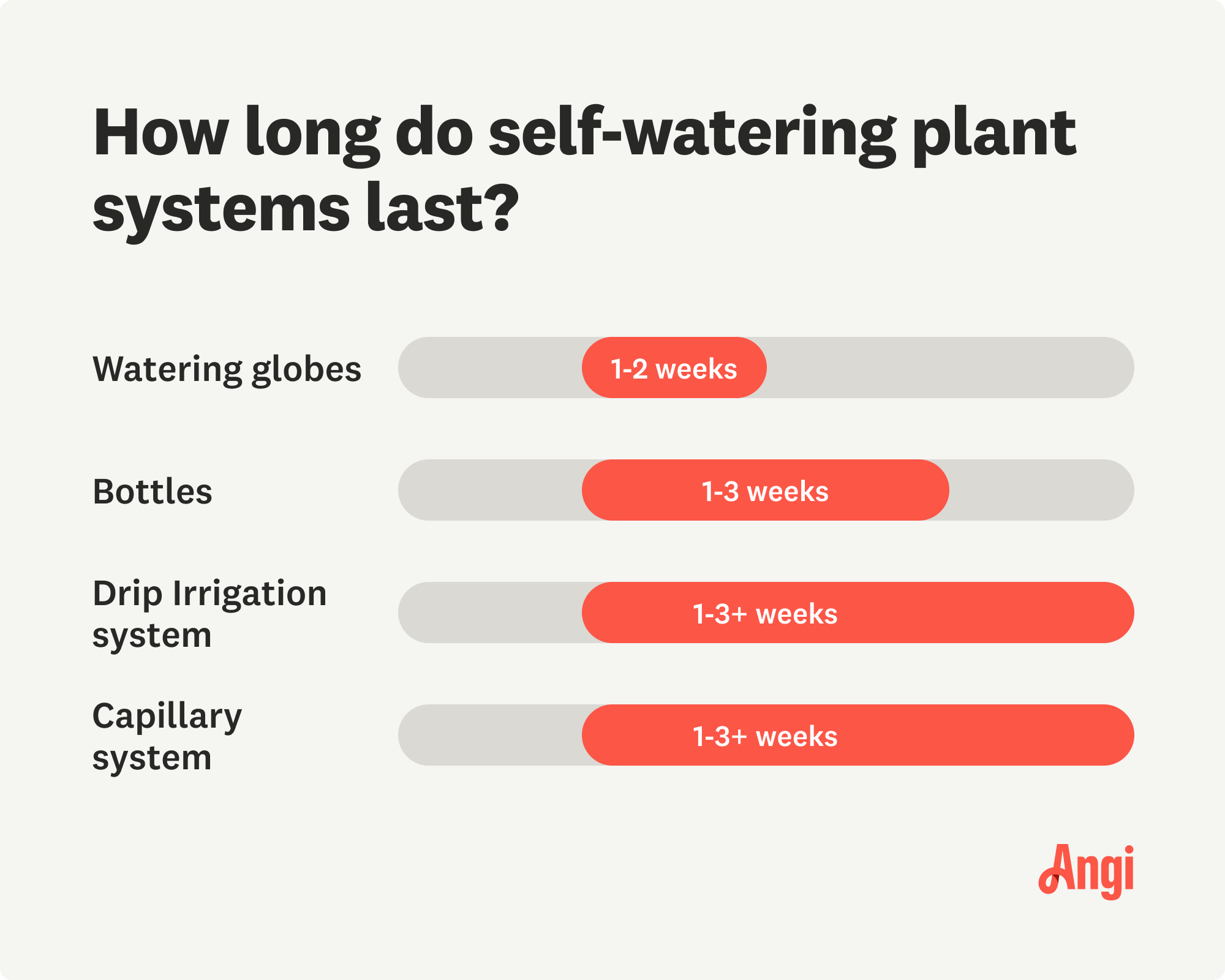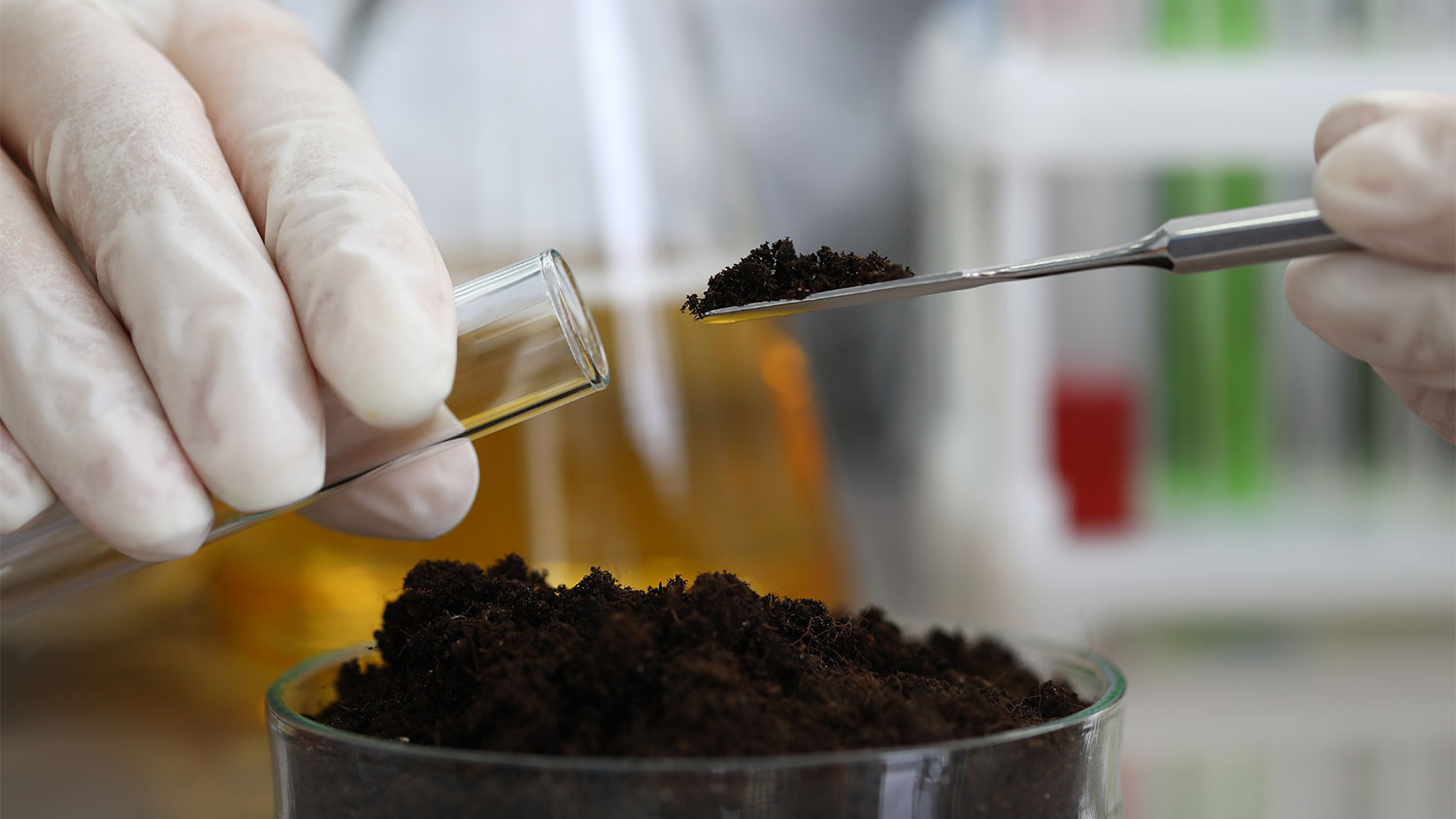
Leveling your yard can help with drainage and prevent damage to your home. Learn the cost to level a yard and what factors can affect the price.
Your holiday doesn’t have to be a death sentence for your plants


Thoroughly water your plants before leaving.
Most self-watering devices work for at least two weeks.
Indoor plants will need less water if they’re away from the window.
A clear plastic bag makes a great makeshift greenhouse.
If you’re frequently away, choose drought-tolerant plants.
No indoor plant lover wants to come home from vacation to find a forest of crispy, brown leaves. It’s a nightmare scenario—but it’s also the nature of being a plant parent. If you leave for a few weeks, there’s almost certainly a plant casualty or two (may our favorite Monstera rest in peace).
Rather than scramble to save a few cuttings after you’ve already killed half of your indoor herb garden, it’s best to be proactive. Your plants may not be able to fend for themselves for months at a time, but they can survive for a few weeks. Here’s how to keep plants alive when out of town (aside from hiring a local plant watering service).
The more sun your plant gets, the more it needs to drink. In other words, the natural light that helps your indoor plants thrive can kill them when you’re away.
Before you leave, take your plant off the window sill and put it in the center of the room. You want to avoid bright sunlight, heating vents, and drafty areas that can dry your plants out. This trick also works to prolong the life of fresh cut flowers.
You can’t control the environment around your outdoor plants, but you can optimize the temperature for your indoor plants to keep them alive when you’re out of town. Most indoor plants (especially tropical plants) will not thrive in a hot, stuffy space.
The ideal temperature for house plants is around 65 degrees Fahrenheit, and you should never let your thermostat drop below 55 degrees.
Depending on the climate, you may have to run your air conditioning to keep your plants from sweltering temperatures. In that case, you’ll also need to increase your home’s humidity. A humidifier will only last so long when you’re not there to refill it, so try placing vases of water around the room instead.
You might turn your home’s water off before a vacation, but make sure you thoroughly water your plants first. The soil should be moist but not so wet that your plants are sitting in mud. Let your potted plants drain properly, and dump the excess water from the saucer into your sink. You don’t want your plants to sit in water because it can cause root rot.
Self-watering systems generally work for around two weeks, though it depends on the size of your plant and the amount of water the system can hold. Wicking systems can last a bit longer than a globe because you can use a large reserve of water. There are a few different kinds, but a local gardener can help you find the best solution for your plant room.
Watering globes are a common indoor gardening accessory. You just fill them with water and stake them into your plant. Generally, they’ll hold enough water for a week or two.
You can use an empty bottle as a DIY watering globe. Just fill it with water and stick it in the dirt as you would with a store-bought option.
Drip irrigation systems are more common in the world of agriculture. There are scaled-down options for indoor plants (or you can make your own DIY watering tube). This type of tubing system will deliver small drops of water to your plant from a jug or basin.
This system uses wicks rather than pipes. Put one side of the wick into your plant’s potting soil and the other side in a basin of water. The bigger the basin, the longer it will last.

Self-watering planters work by directly watering the roots of your indoor plant using a sub-irrigation system. Usually, there are two layers to the planter: a basin for the water and a plastic planter with a porous bottom that goes on top. Some planters also use a wick.
Most self-watering pots can last up to three weeks, but they’ll run out of water quicker if the pot is in direct sunlight or undersized for the root system. Keep in mind that this solution isn’t suitable for all indoor plants. Some plants like succulents and orchids need to dry out between waterings, and the excess water can cause root rot and fungus.
It’s easier for your plants to maintain humidity and moisture when they’re grouped together in a small room. If your bathroom has a source of natural light, try putting your humidity-loving plants (like ferns, air plants, and tropical plants) together in the bathtub. You can even use the tub to water them from below.
This watering method isn’t great for all plants. If you wouldn’t use a self-watering planter, don’t use the bathtub. Otherwise, fill the tub with one to two inches of water. As long as your planters have a drainage hole, the water will wick up into the soil.
A clear plastic bag can act as a DIY greenhouse. The idea is that the moisture from the soil will evaporate and collect on the inside of the bag. Those droplets will rain back down on your plant. It’s like its own little ecosystem.
To use a plastic bag as a greenhouse, follow these steps:
Water your plant
Pull a clear plastic back over the top of your plant
Use bamboo stakes to make sure the bag doesn’t touch the foliage
Tape or tie the bag below the lip of your planter
Cut some small slits for air circulation
You can also use this method to retain moisture among a group of plants with similar plant care needs. Use a large, clear trash bag rather than wrapping each indoor plant individually.

If you’re wondering how to keep plants alive while out of town for more than a month, sometimes it’s just not possible. Indoor plants need regular plant care, and sometimes a trip is just too long.
While hearty plants like pothos may bounce back from drought stress, you may want to get rid of fragile ferns, flowers, and tropical plants if you’re constantly away for long periods of time.
Instead, choose drought-tolerant plants like:
Succulents
Cacti
Snake plants
ZZ plants
Cast-iron plants
These house plants are hard to kill and may survive a month or more without watering (especially if it’s winter and they’re dormant). If all else fails, you can always hire a local plant watering service.
From average costs to expert advice, get all the answers you need to get your job done.

Leveling your yard can help with drainage and prevent damage to your home. Learn the cost to level a yard and what factors can affect the price.

Railroad tie retaining wall costs can vary widely, so getting an accurate estimate for your needs is a good idea to set your budget appropriately.

Leveling your yard can help with drainage and prevent damage to your home. Learn the cost to level a yard in Columbus, OH, and what factors can affect the price.

Get a clear breakdown of geotechnical report costs, including average prices, cost factors, and tips to help homeowners budget for their project.

Looking to install synthetic grass for a putting green or play area? Learn what artificial turf questions you’ll need to discuss with your professional installer before you get started.

What is a privet hedge and why should you consider it for your backyard? Use this guide to consider the pros and cons along with upkeep and maintenance tips.